Genre: Action Developer: Sega Ent./Tatsunoko Prod. Publisher: Sega Ent. Players: 1 Released: 1987
Nowadays, gamers are used to seeing titles that feature their favorite anime series. There are games based on hit series like Demon Slayer and My Hero Academia, and sooner or later most popular shows are likely to appear on consoles in some form. People practically expect it to happen.
That wasn’t the case back in 1987. I was a fan of the original Zillion game and was eager to play its sequel, but I had no idea that it was based on an anime show. I knew nothing about its lore beyond what was in the instruction manuals and revealed in-game. So going in, all I had to appreciate both titles was what I experienced on my television screen. The first Zillion did an excellent job of compensating for its obscure source material. It was able to rely on its excellent combination of action and exploration to compensate for the lack of public exposure. The sequel arrived later the same year, but I was still completely ignorant of what Zillion really was. I never gave it much thought in the decades that followed, since so little of the show had been localized.
Thankfully, that changed with Funimation’s release of the complete series on Blu-Ray. I now have a greater appreciation for the Zillion universe and its characters. I decided to play through Tri Formation again and things were definitely more recognizable! The game’s bright and colorful visuals truly brought the Zillion world to the Master System, and there was even a decent rendition of the show’s theme song! Players controlled J.J., the goofball member of the White Knights team. Fellow Knights Champ and Apple had once more been captured by Baron Ricks’ (they were also captives in the first game) and were being held in his giant space fortress, so J.J. had to rescue them. It’s kind of odd that Champ and Apple kept getting themselves captured. In the show, Champ was the no-nonsense professional who saved J.J. several times. It seemed out of character for him to be so easily apprehended.
The rehashed plot wasn’t the real problem, though. Once the Zillion license was peeled back, there wasn’t that much meat on Tri Formation’s bones. Maybe it was because both games were seemingly developed together and time was short, or perhaps the developers got lazy. Whatever the reason, Zillion went from a challenging Metroid-like experience to a repetitive side-scrolling shooter. There were only two types of stages: one where players simply rode a turbo cycle (the motorcycles used in the show) and shot at soldiers and other foes, and one on foot. Nothing really changed in either case, save for the ability to use the “Armorator,” an armored suit that let one fly to the right instead of riding the turbo cycle. It was possible to change back and forth by pressing up and the jump button, but the upgrade would have been be more useful if the stages didn’t remove the floor or fill it with spikes, forcing the need to fly. Why even have the option the change back, then? There was no strategy involved, and the basic premise of these stages remained the same either way: move right and shoot. There were no boss fights, and the screen never moved in any other direction. The on-foot levels were equally dull since one simply ran in whatever direction J.J. was facing to the waiting elevator to do the same thing on the next floor. There were lots of enemies to fight but no guesswork was required, as there was only ever one elevator to find. At the end, there was a relatively easy boss battle, and then it was back to the turbo cycle. Champ and Apple could be rescued during the on-foot stages, but they didn’t add anything to the gameplay. J.J. could be switched out for either of them when his health was low (providing you have a second controller connected), but they all played exactly the same.
There were a smattering of letter-based power-ups to be had, but they didn’t take much effort to acquire. Grabbing “Z-code” icons increased the Zillion’s firepower, and the “L-code” replenished J.J.’s life bar. There were two “A-codes” for the Armorator needed to transform the turbo cycle, and they were impossible to miss even though Champ and Apple supposedly hid them. I guess by hiding they meant, “leave them sitting directly in J.J.’s path.” What a missed opportunity! Having players search for the A-codes in the on-foot stages would have added some much-needed depth.
Tri Formation’s presentation was as lazy as its level design. Remember that anime theme song rendition I mentioned? You had to get used to it. It was the only tune played during the motorcycle/Armorator stages. A second theme chimes for the on-foot portions of the game, so that maked for a whopping two songs across eight stages. There was desperately little variation in the visuals as well, with the motorcycle/Armorator stages each sporting some minor distinctions. The rest were literally just color palette swaps.
Ultimately, Tri Formation ended up a mediocre side-scroller that didn’t have a lot to offer beyond its license. Eight stages might not sound like a lot, but with how repetitive the game was, it was really more than enough. Fans of the first Zillion game today may want to give Tri Formation a go because of its brand, but they shouldn’t expect much. This game is like a bland fiber muffin with bright, yummy frosting.
SCORE: 5 out of 10

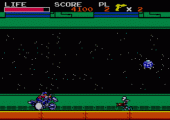
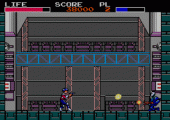
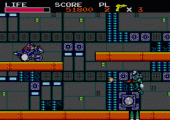
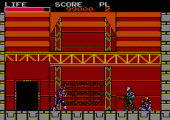
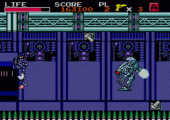
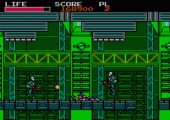
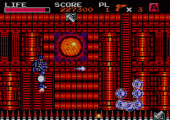
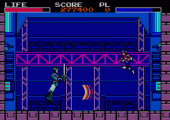
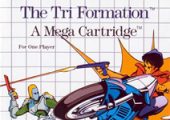
Recent Comments